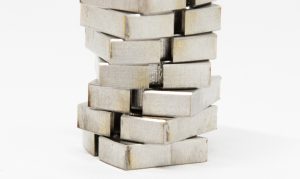
Laser cutting is a process in which a material absorbs light energy and converts it into heat energy, and melts and vaporizes the material.
The laser cutting process is generally divided into four steps:
- The laser outputs a laser beam with high energy density.
- The light beam is focused through the focusing lens, and the energy is highly concentrated.
- The focused beam passes through the center of the nozzle, and the cutting auxiliary gas is ejected from the nozzle, and its axis is the same as the optical path.
- Under the combined action of a laser beam and gas, the cutting material is rapidly heated, oxidized and evaporated to achieve the cutting purpose.
Laser cutting is suitable for cutting thicker and longer steel plates and carbon steels. It has been widely used in industrial production.
There are often various reasons for the poor quality of the cutting part during laser cutting. Several factors can be concluded as follows:
1. Beam characteristic
The power density and energy density of laser irradiation is related to the diameter of the laser spot. In order to obtain a larger energy and power density, the diameter of the laser beam needs to be as small as possible during laser cutting.
2. Laser power
The laser power directly affects the thickness of the steel plate that can be cut. The higher the energy, the thicker the material that can be cut. In addition, it affects the dimensional accuracy of the workpiece, the width of the slit, the roughness of the cutting surface, and the width of the heat-affected zone.
3. Cutting speed
The optimal cutting speed makes the cutting surface appear more stable, smooth, and no slag is generated. If the cutting speed is too fast, the steel plate cannot be cut through, causing sparks to splash, slag generated in the lower half, or even burn the lens; if the cutting speed is too slow, it is easy to cause the material to overmelt, the cutting seam will widen, and the heat-affected zone will increase large, even cause workpiece overburning.
4. Nozzle
Nozzle shape (aperture), nozzle height (distance between nozzle outlet and workpiece surface), etc., will affect the cutting effect.
5. Focus position
The focus position directly affects the incision width, verticality, roughness of the cut surface, and the adhesion of dross. Deviations in the up and down positions of the focus of the laser beam cause the energy to be not converged on the workpiece. If the workpiece is not sufficiently vaporized, the amount of slag generated is increased, and it is not easy to blow off. It is more likely to produce burrs and make the cut surface roughly.
6. Auxiliary gas
Auxiliary gas is required for material cutting. The type of gas, air pressure, nozzle diameter, and geometry affect edge roughness and burr generation.
7. Working time
The laser cutting machine works for too long, which causes the equipment to appear in an unstable working state. It will also cause the occurrence of burrs. Therefore, it is also necessary to allow the machine to take a rest.
As stated above, mastering the law of the influence of various process factors on the quality of the processing, you will get the parts with stable quality.
You can find the photo display of the CNC machining parts made by us HERE
